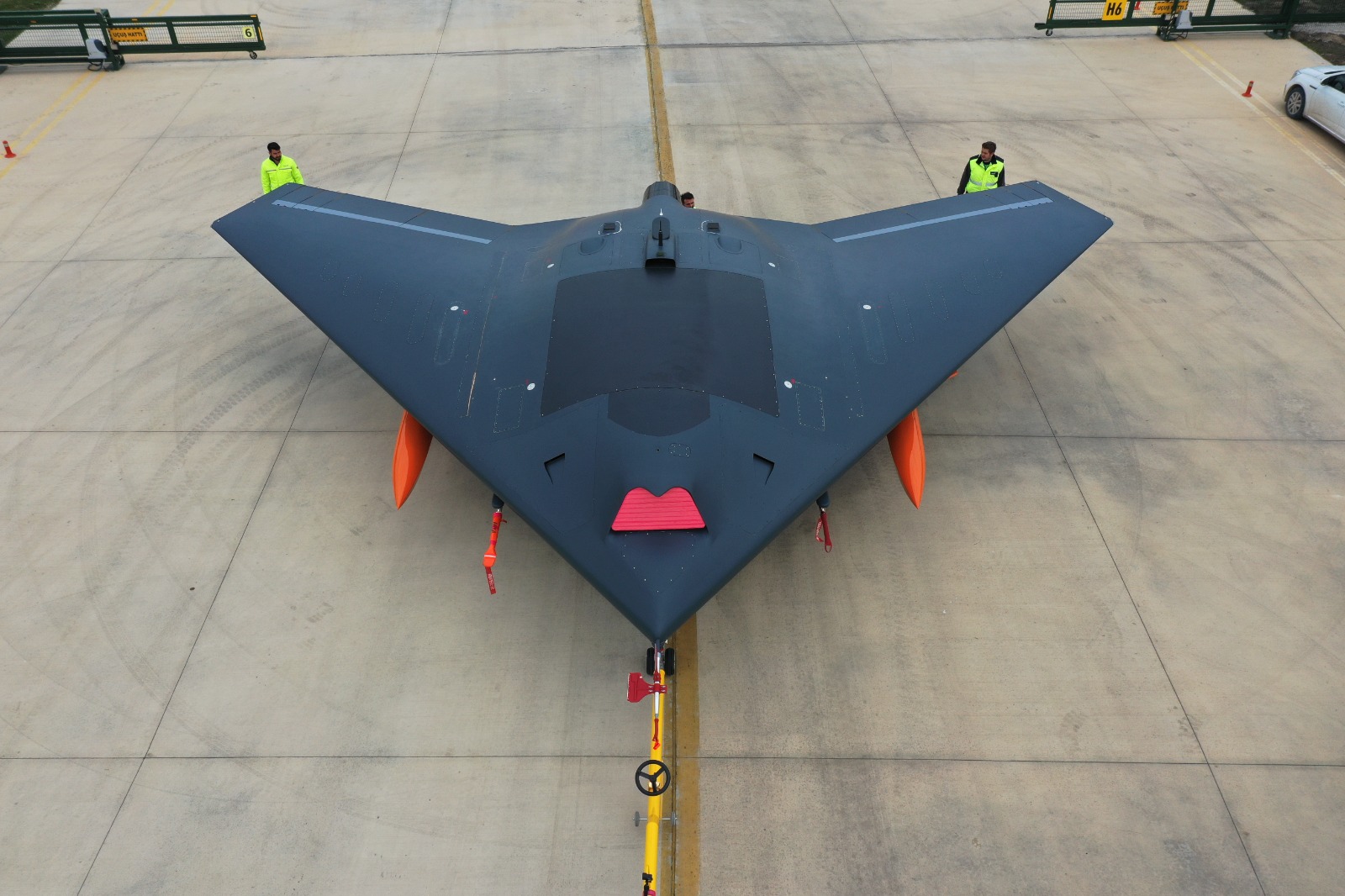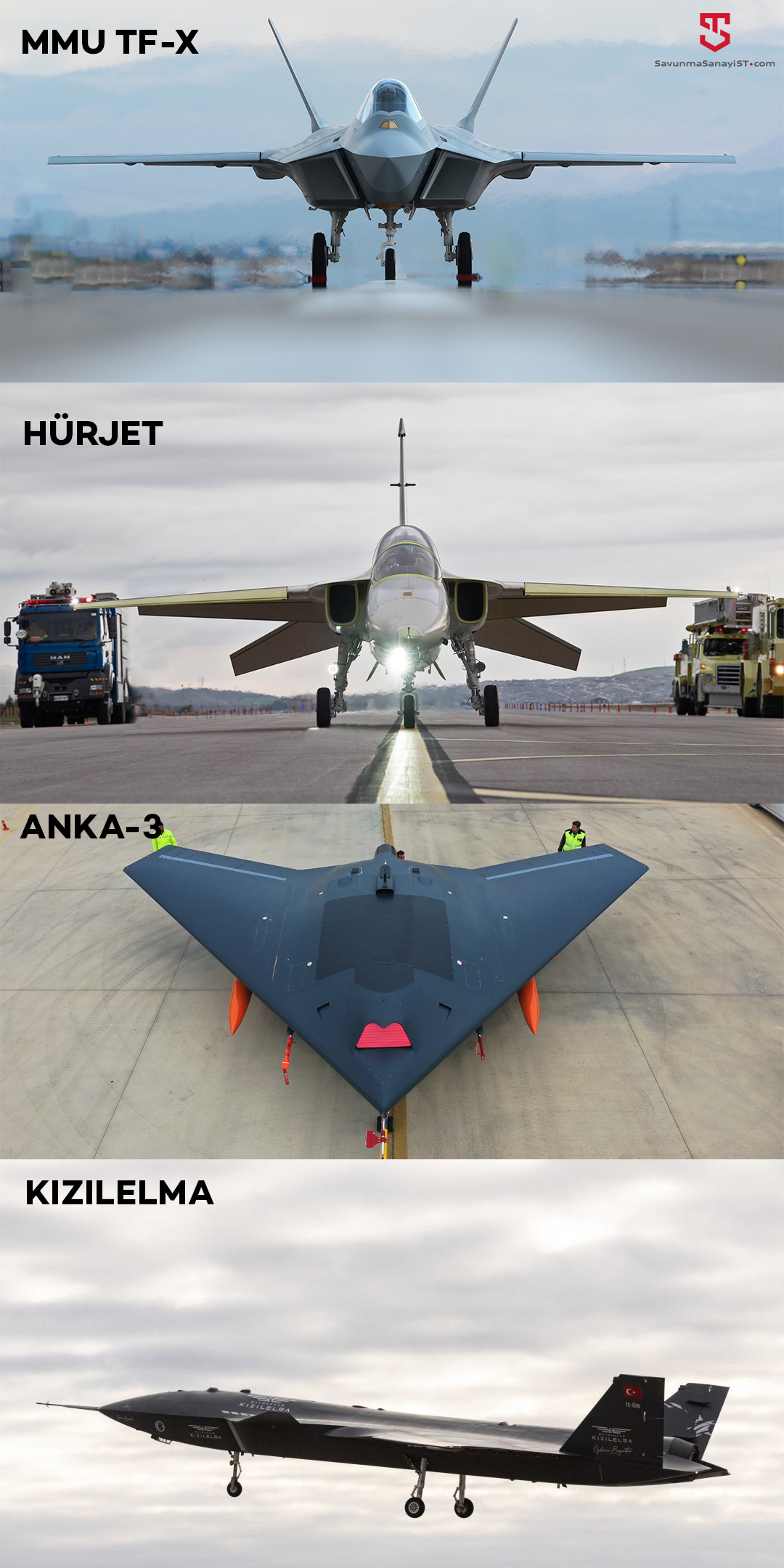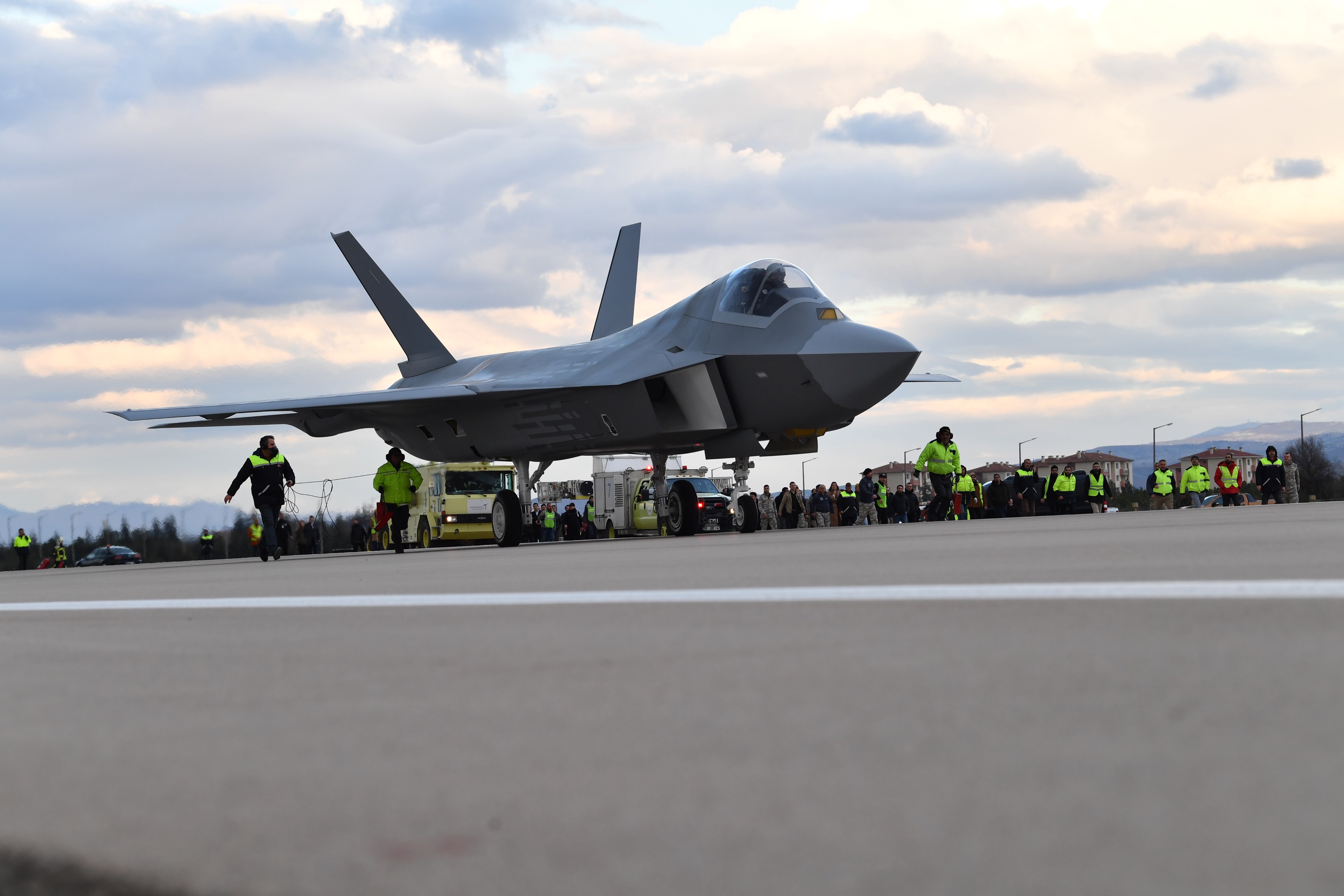Anka-3

"While I was on the Çanakkale flight with HÜRKUŞ yesterday, GÖKBEY, ANKA and AKSUNGUR were test flying, MMU was starting the engine, HÜRJET was getting ready for the first taxi, and ANKA-III was being taken to engine tests!…"
"I would love to be able to explain what I feel, but right now, I am under the attack of very intense and strong emotions, like all TAI employees!"
"Like all TAI members, who have been working hard with determination, by not abandoning the ship, never giving up, seeing all difficulties as attractive, despite the unbelievers who have been saying that these planes cannot be built for years!"
"By the way, it took a while for ANKA-III, whose photo we shared, to come to your attention due to the difficulties in its production with its delta wing geometry, which does not have a vertical surface, but I want you to know that this appearance contains technological secrets that will give it an edge over all its competitors.
"Secret" for now..."
- Murat Özpala CAT-1 test pilot of Hürkuş

"While I was on the Çanakkale flight with HÜRKUŞ yesterday, GÖKBEY, ANKA and AKSUNGUR were test flying, MMU was starting the engine, HÜRJET was getting ready for the first taxi, and ANKA-III was being taken to engine tests!…"
"I would love to be able to explain what I feel, but right now, I am under the attack of very intense and strong emotions, like all TAI employees!"
"Like all TAI members, who have been working hard with determination, by not abandoning the ship, never giving up, seeing all difficulties as attractive, despite the unbelievers who have been saying that these planes cannot be built for years!"
"By the way, it took a while for ANKA-III, whose photo we shared, to come to your attention due to the difficulties in its production with its delta wing geometry, which does not have a vertical surface, but I want you to know that this appearance contains technological secrets that will give it an edge over all its competitors.
"Secret" for now..."
- Murat Özpala CAT-1 test pilot of Hürkuş
Last edited:


